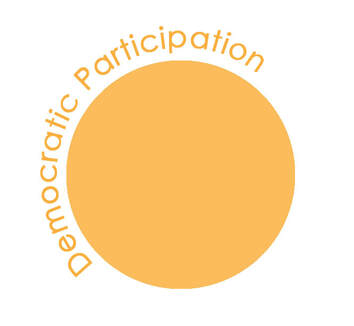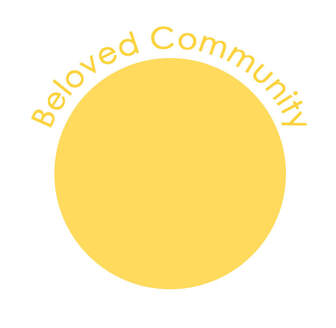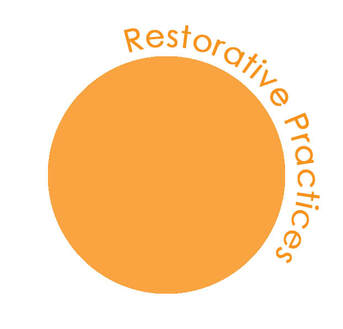After five years of trial and error implementing the various positive youth development methods described here into our classrooms, we have begun to outline a particular sequencing that we hope to pilot so as to build a sequential framework that could facilitate positive youth development in a way that intentionally fosters shared responsibility between individual students and the shared community that makes up school and classroom life. Since we are piloting this ourselves, we do not have ready-made resources for every part of this sequence. As we try out these units we will add more details and resources.
We imagine that any curricular sequencing for youth development would require recursivity for success. In other words, as a class explores and commits to a vision, you will have to periodically revisit individual and class identity topics in order to achieve that vision. Though these guideposts do build upon one another, teachers and/or student councils collaborating with teachers will need to decide which threads are most relevant at which points. In other words, content priority will emerge as you and your students observe and reflect on experiences. Therefore, we are neither assigning timeframes to these steps nor suggesting that every topic in the sample lessons be covered in a single unit. We invite you to add suggested lessons to this piece with us as we experiment with this sequence in the coming school year.
We imagine that any curricular sequencing for youth development would require recursivity for success. In other words, as a class explores and commits to a vision, you will have to periodically revisit individual and class identity topics in order to achieve that vision. Though these guideposts do build upon one another, teachers and/or student councils collaborating with teachers will need to decide which threads are most relevant at which points. In other words, content priority will emerge as you and your students observe and reflect on experiences. Therefore, we are neither assigning timeframes to these steps nor suggesting that every topic in the sample lessons be covered in a single unit. We invite you to add suggested lessons to this piece with us as we experiment with this sequence in the coming school year.
BELOVED COMMUNITY METHODS
Who Am I? Exploring Individual identity and Visioning
During these lessons, students explore how identities are formed based on values, how external labels can consciously or unconsciously influence choices, how a person’s actions define their identity in the world, how people’s identities can influence the world, and how to create a vision for their desired identity so that they can learn how to make deliberate choices that result in actions that reflect their intended identity. Throughout these lessons teachers should note and reflect back to students the most recurring values as these are the foundation for the next set of lessons.
Who are we? Generating a Class identity Through Values and Visioning
During these lessons, students generate a class identity by identifying shared values, agreeing to uphold them, engaging in activities that help students understand how their individual and collective actions align with or detract from upholding their values, and how their actions and identities are influenced by their classroom interactions as well as how the classroom interactions influence their actions and identities. Though these concepts require an introductory set of lessons, these concepts will also be explored as needed. For example, if the teacher observes a breakdown in communication during collaborative group work, then the teacher might structure a lesson that connects class values to previous lessons on communication and collaboration skills in order to engage the class in honing these skills while also problem-solving to refine agreements and processes. In other words, this particular set of activities are best developed by responding to emergent needs.
ESTABLISHING AND MAINTAINING AGREEMENTS
Agreements should stem from shared values. For restorative processes and structures, see “Lesson Plan 2-Agreements” (pp. 37-40); sample agreement definition activity; sample dialogue to revise agreement maintenance procedures; sample student reflection for maintaining agreements.
Communication Skills
Active listening is necessary to communicate well and learn. Though it is not the only skill, it is one we have developed many resources around. See the YELL curriculum for additional lessons on soft skills as we adapted many of our soft skill resources from this curriculum. For examples, see “Active Listening and Facilitation Guidelines;” “Active Listening with Creative Questions;” and the “Active Listening Rubric.”
Collaborative and democratic Skills
Students need to be taught how to collaborate and contribute in a democratic space. Many collaborative skills can be found in the YELL curriculum as well as the activities in the “Personal Development” section below. Though this is not an exhaustive list, some essential skills that need to be taught for effective student-driven collaboration and democratic contribution include consensus strategies, active listening and facilitation strategies, jobs, student council, and dialogue activities. See Youth Development: Democratic Participation.
Owning Your Education
Teachers can help students build ownership of their learning and educational journeys by conducting dialogues and restorative circles asking students to reflect on observations and texts regarding education.
Conflict Resolution Skills
Teachers explicitly teach students how to name and peacefully solve conflict. See Lessons 3-6 in Teaching Restorative Practices Through Classroom Circles as well as Youth Development: Restorative Practices.
Maintaining a Positive Classroom Environment
See Lesson 7 in Teaching Restorative Practices Through Classroom Circles.
What is Our Vision for the World as It Could Be, And How Do We Realize It?
During these lessons, students generate a vision for the world as it could be. As students explore their desired individual and class identities, it is powerful for them to also generate a vision for desired institutional and communal identities. Creating these visions and taking even the smallest actions toward realizing these visions generates hope, and this hope is essential for catalyzing perseverance through the challenging process of transforming the self in order to transform the world. These visions and reflecting on progress toward realizing them create performances of possibility for students and therefore help them believe that change is possible. Some activities include:
I Dream A World
Students read Langston Hughes’s “I Dream A World” then write their own piece in response. Students share. To generate shared values, the teacher can analyze student writing for recurring values. These then become the values that establish the vision for their desired world.
Drawing
Students can draw the world or institutions as they could be reflecting the qualities, processes, and values they desire.
Observation and Reflection
Students can take field notes on the world as it is then engage in dialogue about the word as it could be. See Adaptable Methods: Debate, Discussion, Dialogue.
Real to Ideal
Students create tableaus representing an institution or some aspect of the world as it is. Then, they create another tableau reflecting that institution or aspect in a perfect world. One group at a time presents to the class and the teacher facilitates a dialogue to reveal what the students believe has to happen to move reality from what is to what could be. Students can then use these ideas as a catalyst for action projects or other forms of civic action.
Forum Theater
Who Am I In the World?
Exploring a Public Persona: As students explore their personal and collective visions for their desired identities and world, students must also create a vision for how they desire to show up in different places for various audiences. These considerations enhances authentic learning by helping students understand how to both honor their identity and act in powerful ways in particular contexts. Some example lessons include:
- Code-switching
- Analyzing spaces and audiences for power dynamics
- Presenting for a variety of audiences
- Making professional phone calls
- Sending professional emails
- Negotiating personal identity and public identity
Personal Development
In order to achieve their personal and collective visions, students must develop the personal and interpersonal skills necessary to support growth during challenging times. Some topics include
- Listening to silence
- Reflection
- Professional dress
- Making deliberate choices
- Building from your strengths lesson with reflection



